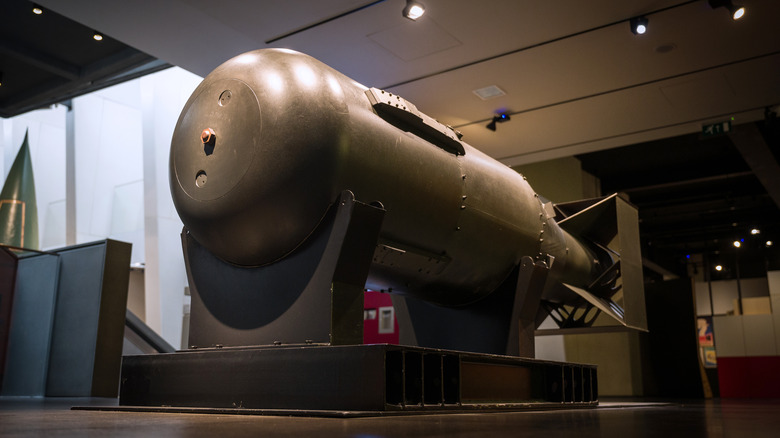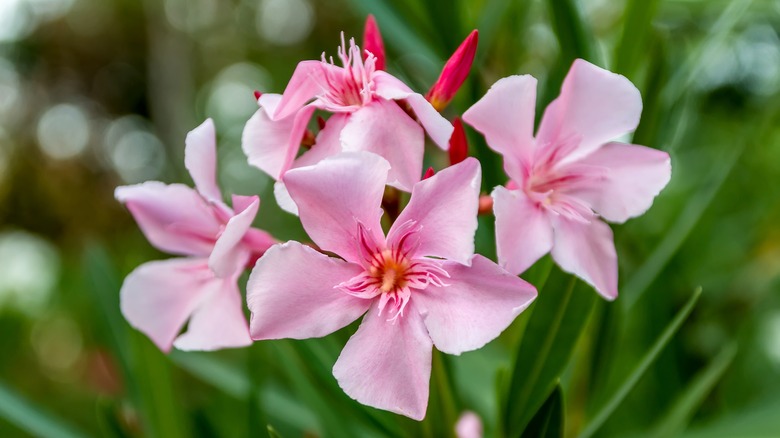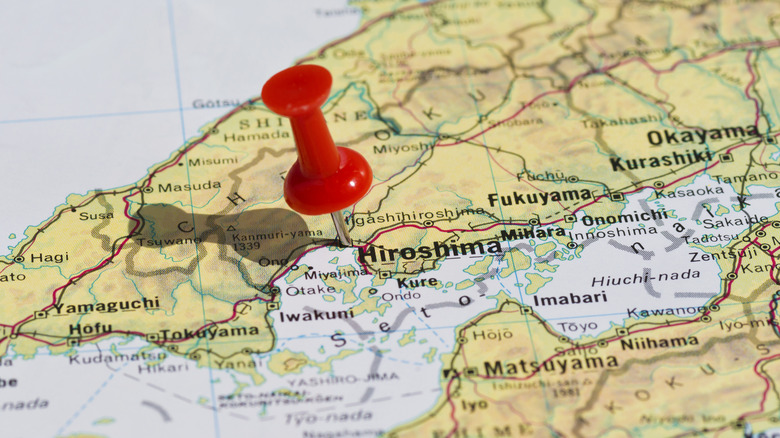How The Atomic Bombs Made The Oleander The Flower Of Hiroshima
World War II was wrought with catastrophic events, and one of the most devastating was the use of nuclear weapons. On August 6, 1945, the United States dropped the first atomic bomb, dubbed "Little Boy," on Hiroshima, Japan, and three days later, it dropped a second bomb, "Fat Man," almost 200 miles away on Nagasaki. The two cities were annihilated, and more than 200,000 people were killed, per History. But the effects were far from immediate.
Due to the amount of radiation released from the bombs, survivors experienced an increase in the rates of several types of cancer for several years after the blasts (via the International Campaign to Abolish Nuclear Weapons). Everything within a one-mile radius of where the bomb landed was destroyed. Fallout traveled for miles, contaminating water and plant life, according to Sciencing. The BBC reports that the damage from the bomb was so bad, that Harold Jacobsen, who worked on the Manhattan Project, suggested nothing could grow in such conditions for 70 years.
Oleander was the first flower to bloom after the bombing
Just a few months after the bomb was dropped on Hiroshima, something unexpected happened — plants began to sprout. According to the BBC, weeds were first seen growing in autumn of the same year. To everyone's surprise, oleander flowers bloomed the next summer. Not only that, but tiny sprigs began to shoot up from the remains of old camphor trees that somehow survived the blast.
The City of Hiroshima reports that in 1973 residents voted on a city flower and tree that best represented their everyday lives and past experiences. It should come as no surprise that the oleander was chosen as the official city flower because it is a "source of strength and hope" for locals. They also voted to make camphor the official city tree for the same reason. Oddly enough, oleander plants bloom most abundantly around August 6.
Oleander plants are resilient
Oleander plants are quite hardy. They need little water and can adapt to different soil types (via HGTV). Their resilience might account for part of why they were able to grow so soon after the bombing. However, History Extra reports that a typhoon hit the city on September 17, 1945, and with it brought fresh, clean soil, which could have contributed to the plant's quick return.
Japanese architect Hiroshi Sambuichi has another reason why plants were able to grow so soon after such destruction, and it has to do with water that flows into Seto Inland, which borders Hiroshima. He states that seven rivers flow into the area, making a way for clean water and fresh air to find their way to the shores of Hiroshima. "The water changes twice and the air once. And as long as the sun rises and the moon moves, this will repeat itself regularly," he explains (via Louisiana Channel).


